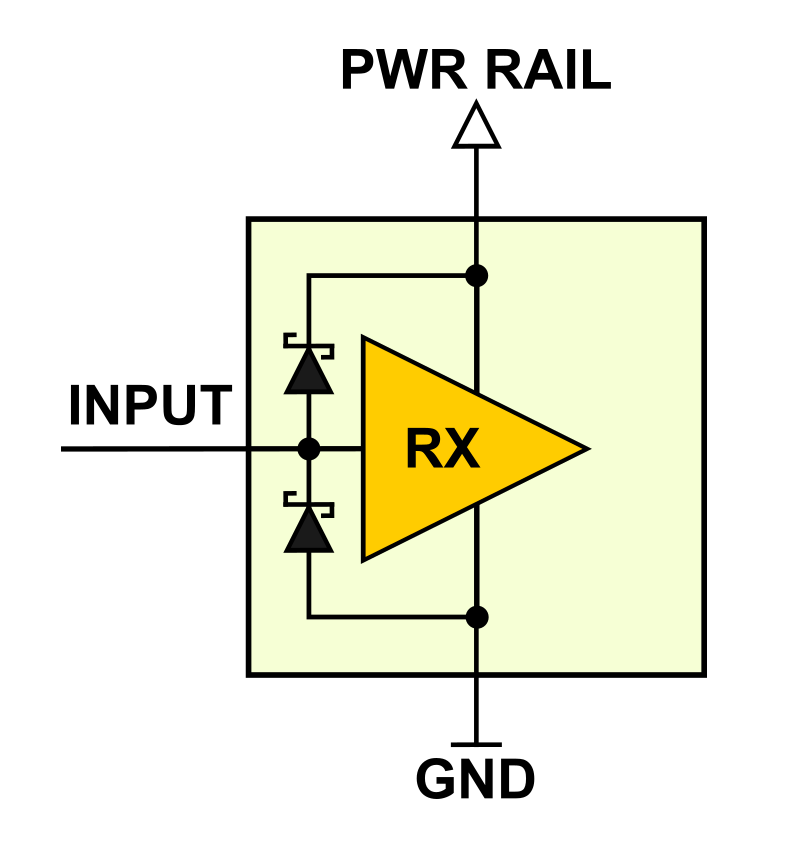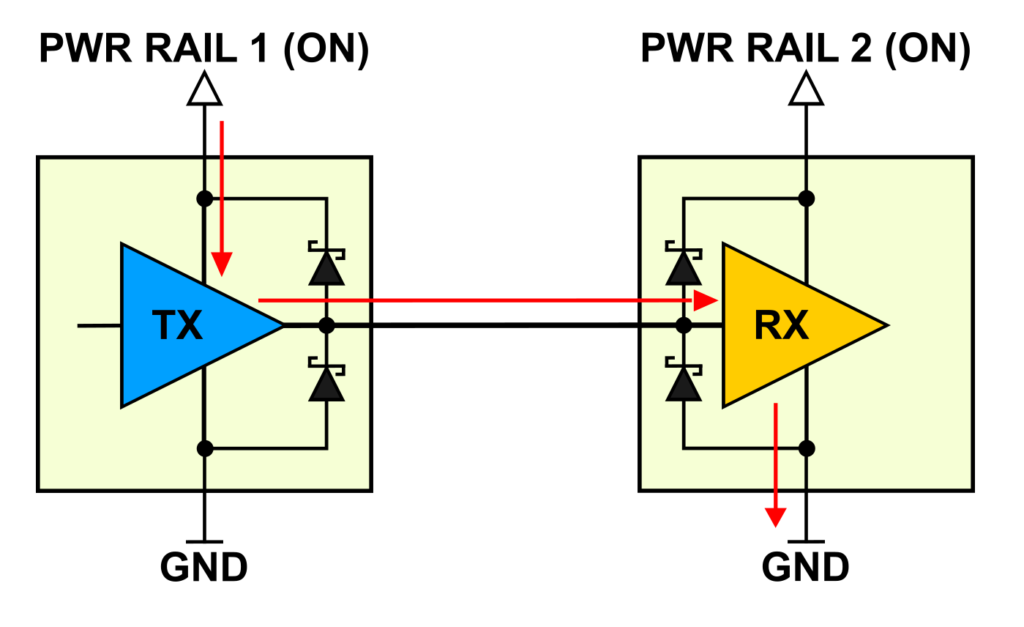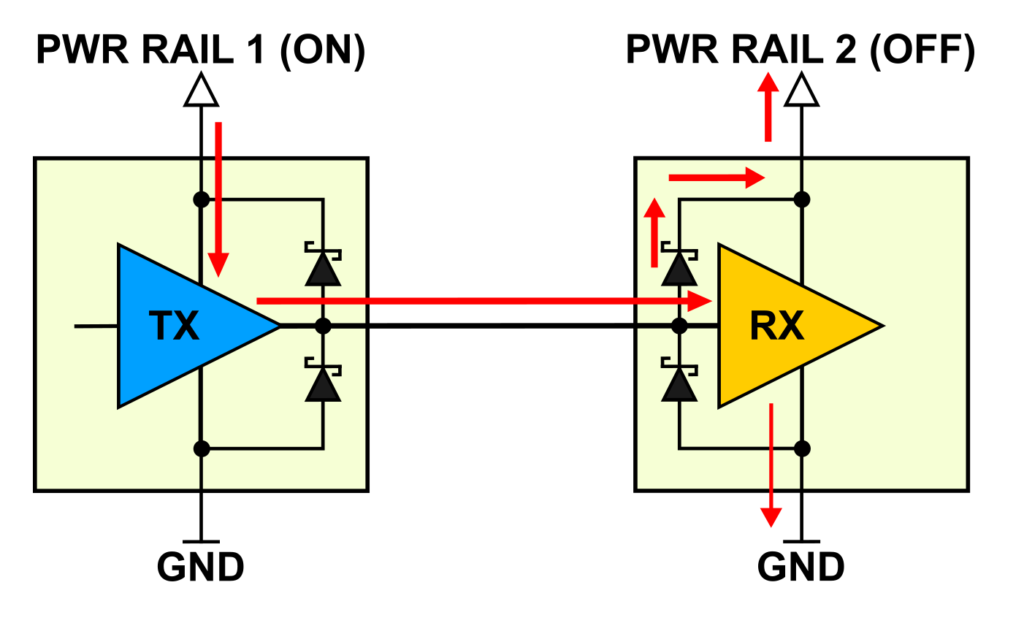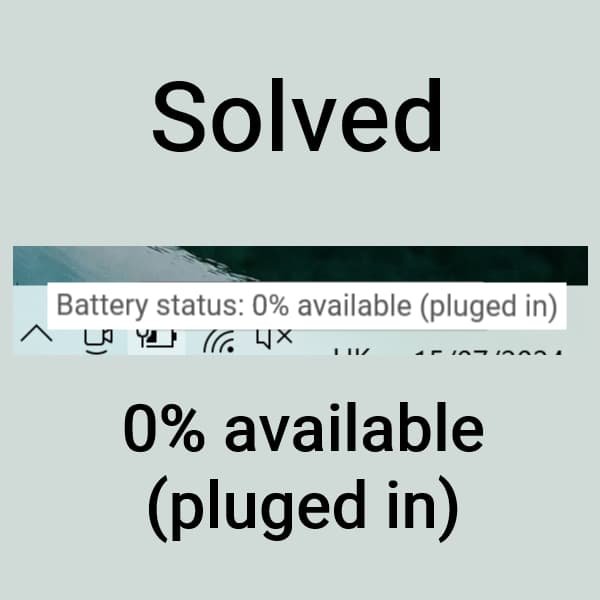Backfeeding is a concept that is often discussed but not always fully understood. Backfeeding, in the context of electronics, refers to the flow of electricity in a direction opposite to the intended flow. This phenomenon primarily occurs over the signal path and can be attributed to signals crossing different power domains. Backfeeding can happen between circuit blocks powered by different power domains. Essentially, it occurs when a still-powered domain supplies power to another (powered-down) domain. This can result in residual voltage on a power rail that is supposed to be turned off. I should note that backfeeding is sometimes also called backflow. In this blog post, I’ll explain the concept of backfeeding in electronics, its potential risks, and how to prevent it.
What is Backfeeding?
In order to grasp the concept of backfeeding, it’s essential to examine the internal circuitry of an input pin. Most integrated circuits (ICs) have internal ESD protection diodes. These diodes are connected such that the cathode of one diode is connected to the IC input pin and the anode is connected to ground, while the anode of the other diode is connected to the power supply and the cathode is connected to the IC input pin (Figure 1).

Assume we have a circuit, as seen in Figure 2, where the input of one IC is connected to the output of another IC. We will now examine two scenarios: in the first, we will say that both ICs are powered, and in the second, we will say that the receiver IC’s power is turned off.

Case one: both ICs are powered
If both ICs are powered, the protective ESD diodes I mentioned before are not conducting. Therefore, in this case, they can be practically ignored. As shown in Figure 3, there is only a small current flowing from the transmitter to the receiver. This is not backfeeding; this is the normal signal current.

Case two: one IC is powered down
Now let’s analyze the situation where the transmitter power circuit is turned on and the receiver power circuit is turned off. In this case, when the transmitter’s output buffer generates a high signal, the ESD diode of the receiver input is forward-biased. As a result, current passes through the diode to the receiver’s power rail, as shown in Figure 4.

This phenomenon, when the IC power circuit is fed through the input pins of the IC, is called backfeeding. Depending on the situation, the backfeeding can reach several milliamps. As a result, the backfeeding path can raise the receiver’s power rail by several volts. Of course, the exact measurement voltage on the receiver power rail depends on its load, backfeeding path, and the number of pins that are backfeeding.
It is worth emphasizing that backfeeding can also occur through open drain signals if the pull-up resistors are still powered, even though the receiver’s power supply circuit is turned off. Due to the high values of the pull-up resistors, the current due to backfeeding is lower than with CMOS signals. However, this current depends on the number of interface pins that are backfeeding. When a lot of open drain signals are backfeeding, it can still result in a voltage increase on the receiver power rail, which may cause some problems.
Issues caused by backfeeding
If you’re reading this article, you’ve probably read quite a few IC datasheets. You may have noticed in these datasheets that, normally, the IC absolute maximum input voltage is specified as VDD+0.3V. This 0.3V limit is dictated by the ESD protection diode. This means that backfeeding technically violates the maximum input voltage specifications. Therefore, we cannot be certain that the IC won’t be damaged in the event of backfeeding because the manufacturer typically does not specify the operation of the IC beyond its absolute maximum limits.
The output of the driver that caused the backfeeding may be overloaded and therefore damaged. Also, a high continuous backfeed current can damage the protective ESD diode of the receiver. An ESD diode can sustain permanent damage if it experiences high power dissipation, which is higher than the diode is intended to handle.
Damaged IC inputs or outputs due to backfeeding current is usually a minor problem. Problems caused by a residual voltage on a turned-off power rail are often much more serious. When this residual voltage on the power rail reaches a certain level, all ICs on that power rail may start to exhibit unexpected behavior. When the voltage reaches the power-on-reset threshold, ICs or blocks of ICs can begin operating. This may result in higher current consumption on the backfeeding path, which can reduce the residual voltage. Well, as you can probably understand, this can cause ICs to oscillate between starting and crashing, which will lead the circuit to behave unexpectedly.
Whether backfeeding will cause problems in your design primarily depends on two things: the backfeeding current and its residual voltage on the IC power rail. The lower the current through the backfeeding pins, the lower the chance that the IC will be damaged. The lower the remaining voltage on the IC power rail, the lower the probability that the IC will show unexpected behavior.
How to prevent backfeeding
There are multiple methods to prevent backfeeding. All these methods are different, and the choice to use one of them depends on many factors, such as the type of signal, cost, PCB space, etc. For all these reasons, choosing the right method to avoid backfeeding is difficult. I’ll go over a few methods in this section that can be helpful to prevent backfeeding. I’ll talk about both easy and affordable ways as well as difficult and costly ones. I must stress that there are definitely more methods, but I will just talk about a handful here. Each method should be selected with consideration for the signal we are trying to protect from backfeeding.
- Do not use multiple power domains. Of course, the best solution is to avoid using different power domains altogether.
- Do not drive outputs high. Backfeeding can be avoided if the driver output is not set to a high level when the receiver power is turned off.
- Use a series resistor. A suitable backfeeding prevention method for slow signals is a high-value series resistor. As I said before, the resistance does not eliminate backfeeding, but it limits the current, and therefore the residual voltage is reduced.
- Use interfaces without a backfeeding path. Some interfaces have input circuits that are not prone to backfeeding or have backfeeding prevention built-in. For example, some high-frequency signals allow capacitive coupling. Capacitive coupling blocks the DC current, and as a result, backfeeding is eliminated.
- Galvanic Isolation. Galvanic isolation can be achieved using transformers, optocouplers, and other specialized ICs.
- Buffers. There are various types of buffers that can eliminate the risk of backfeeding, for example, tristate buffers with an output enable signal or specialized buffers with a backfeeding blocking feature. Do not forget that a level shifter can also be used in this case. Just remember that not all buffers or level shifters have backfeeding blocking features, so be aware of this when selecting one.
As I said before, there are many ways to avoid backfeeding. I have discussed only a few of them here. There are different signals, and for different signals, you will have to use different methods to avoid backfeeding.
Conclusion
Backfeeding in electronics is an unintentional and irregular flow of current. It mainly happens over the signal path. It can cause increased power consumption, unexpected electronic circuit behaviors, and, in the worst-case scenario, equipment damage. By understanding the causes and risks of backfeeding and taking the necessary precautions, we can ensure the safe and efficient operation of our electrical systems.


